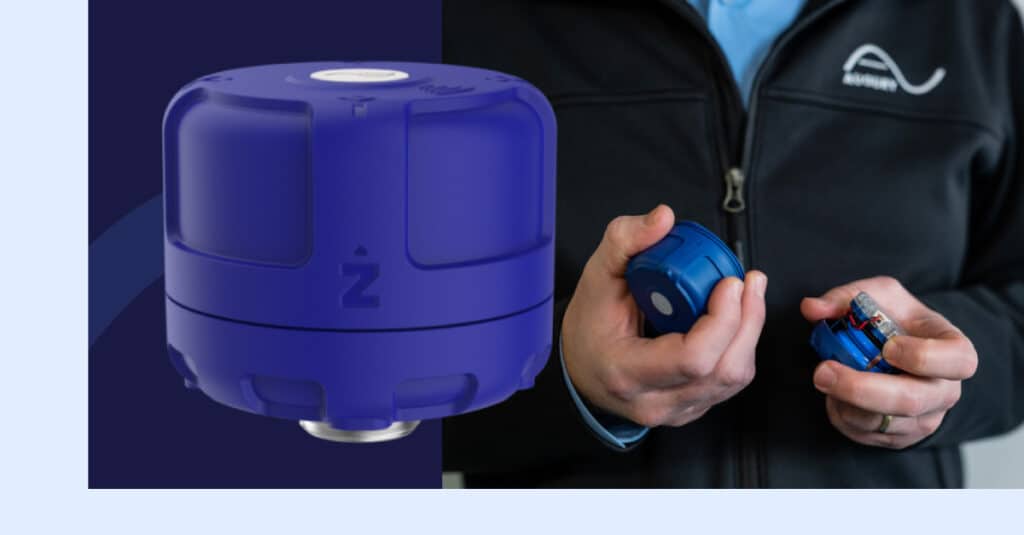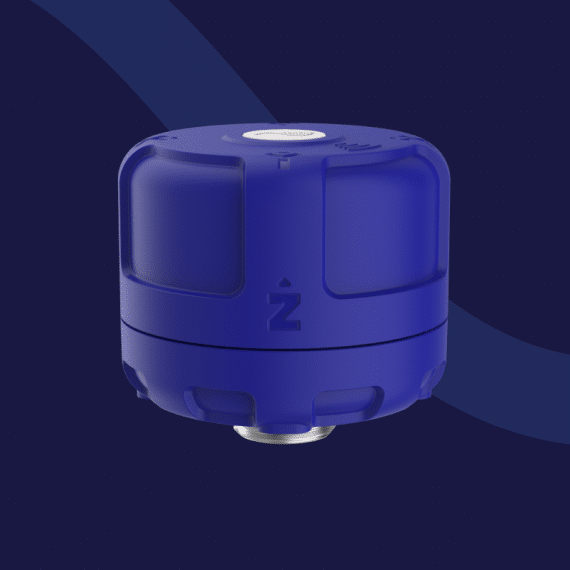
Although industry professionals have long relied on predictive and preventive maintenance methods, the field leaped forward with the founding of Augury in 2011 by Gal Shaul, CTO, and Saar Yoskovitz, CEO. Augury’s machine-health solution not only predicts when a machine will fail but also why. Similarly, it provides steps for preventing failure.
Like tea leaves at the bottom of a cup or the lines on our palms, an augury is a sign of what’s to come.
By combining the Industrial Internet of Things with artificial intelligence, Augury’s unique machine-health solution listens to machines, pores over continuous streams of data, and provides accurate, actionable insights regarding machine health.
But your team — not the technology — is the magic ingredient in machine health — and knowledgeable, skilled workers who act on machine-health insights are necessary for delivering value. Digital transformation in manufacturing might rely on sophisticated sensors, vast amounts of data, and cutting-edge AI. But ultimately, that transformation starts with people.
What Is Machine Health, and How Does Augury Help You Achieve It?
Behind people, machines are the greatest asset in a manufacturer’s supply chain. Thus, the importance of machine maintenance is huge, especially considering the high costs of unplanned downtime. Machine health solves this problem by automating machine monitoring and diagnostics. It essentially enables prescriptive maintenance, which not only predicts when a particular failure will occur, but also why it happens and how to fix it. This increases the reliability and efficiency of plant operations while also optimizing machine performance.
How Does It Work?
Using sensors, Augury connects manufacturing assets to help companies begin their digital transformations. These sensors monitor and collect vibration, magnetic fields, and temperature data. This information uploads to the cloud, where Augury’s proprietary machine-learning algorithms analyze it. This helps pinpoint problems before they occur by informing plant operators about what has been detected and how to fix it. The platform also scores each piece of machinery so plant personnel can strategically plan repairs. Finally, this data can integrate with existing tools and be shared throughout the company to assist with general machine-health planning activities (such as budgeting, ordering parts, or scheduling work).
The goal is to transform how industrial organizations operate by digitalizing machine health and maintenance. That said, with comprehensive digital transformation well underway in manufacturing (and across most industries), the human element cannot be ignored. This is where Augury shines: By eliminating mundane and unnecessary manual data collection, our solution enables skilled workers to focus their time on tasks that actually require their expertise. It also helps those on the plant floor locate and repair machines faster (and with the knowledge that they can successfully correct the root cause of any malfunctions).
What Makes Augury Different?
Digitalization has long been a buzzword in manufacturing, but what sets Augury apart is its power to propel digital transformation through machine health. This delivers the insights necessary to optimize overall equipment effectiveness and total effective equipment performance — also known as OEE and TEEP, respectively.
Think of it like this: If you know your cholesterol has gradually increased over time, you’d go on a diet to prevent it from reaching dangerous levels. Being aware of that metric could mean the difference between life and death. In manufacturing terms, it’s the same. Relying on scheduled machine maintenance is the difference between recognizing trouble at the first sign and proactively correcting it versus shutting down the plant for an emergency repair.
What Does Machine Health Look Like in Action?
To increase efficiency, manufacturing firms turn to digitalization, data analytics, and AI. Augury’s customers — including firms in the consumer packaged goods and beverage sectors — use machine-health metrics to improve machine performance. The following case study about a beverage company we work with provides a good snapshot of the technology in action.
The company’s plant-maintenance manager resisted Augury’s continuous-monitoring health program at first; he was certain the preventive maintenance recommendations from his original equipment manufacturer were enough — especially because most issues were small and related to normal wear and tear.
That changed, however, when he received an alert identifying a possible mechanical issue with the filler and seamer equipment. This wasn’t a small problem: It was the type of machine failure that could shut down the line for an entire day — resulting in unexpected overtime, expensive repairs, and spoiled beer.
In beverage and bottle manufacturing plants, quality control can detect a seamer issue, but manual tests take considerable time and expertise. Likewise, this process can miss problems the human eye can’t detect. Although these areas are easy to overlook, this is where problems are the easiest, quickest, and most cost-efficient to fix.
But with Augury’s system, the maintenance manager diverted production to another line and sent a team to begin repairs. Quick action meant everything: Early detection of the problem by Augury — combined with the manager’s rapid action — prevented unplanned downtime and mitigated production costs. It also preserved the company’s reputation: If the problem went undetected and the company shipped spoiled beer, the result would be nothing short of a public relations crisis.
How to Begin Your Plant’s Journey Toward People-First Digital Transformation
Digital transformation in manufacturing requires sensors, platforms, data, and AI. But as the previous case study proves, it also takes knowledgeable, skilled workers to utilize data in meaningful ways. Data without insights is as useless as insights without people taking action.
In other words, digital transformation starts with people.
The first step toward implementing an effective machine-health program is understanding the challenges your workers face and applying that knowledge to evaluate your options. Identify a tech partner that can deliver the necessary data and insights to eliminate roadblocks and unplanned downtime. In turn, profits and throughput will increase as risk and employee stress drop.
Digital Transformation Relies on Enabling People
Once you’ve identified a digitalization approach, it’s time to educate your people. You must make two things clear:
1. How the technology works, and
2. How your team — and not the technology — is the magic ingredient to maintaining machine health.
For the people responsible for managing and optimizing machine productivity, IIoT-enabled predictive-maintenance technologies can help them perform more effectively in their roles. Ultimately, the decreased downtime helps improve OEE.
And because continuous-monitoring solutions don’t require any new data, they’re not only effective at enhancing OEE, but they also do so without placing extra burdens on plant teams. For example, once plants install sensors as part of Augury’s Halo solution, plant workers don’t have to record any manual vibration routes.
Predictive machine technologies like Augury’s continuous machine monitoring also enable team collaboration. When objective, actionable data determines decisions about repairs, there’s no room for opposing opinions. Instead of debating whether to take action, plant teams are free to focus on new solutions for other supply chain issues (such as factory waste).
Ensuring People Buy Into (and Use) the System
Helping your team members understand new technology and how it assists with their tasks is just the first step of earning buy-in and ensuring system use in their day-to-day roles. The next step is teaching workers to speak the system’s language.
It’s not hard to appreciate the potential of advanced digital machine-health solutions that provide diagnostics and recommend actionable maintenance requirements. Still, the system can feel overwhelming if you don’t know how to use or interpret the information it gives.
For instance, like any continuous data stream, Augury’s system can detect both the sudden vibrational shift of malfunctions and the slow surfacing of a problem via standard wear and tear. Workers must learn to interpret these changes so they know when to take action: Is this a big problem that requires immediate attention? Or is it a problem that’s gradually getting worse and can be fixed during planned downtime?
No matter the size of a malfunction, continuous data streams paired with digital machine-health solutions represent the most effective tool for enabling proactive maintenance.
Building a Culture of Proactive Maintenance
The final step of digital transformation involves fostering a culture that values proactive maintenance.
Everyone plays an important role from the top down. Like any change that will transform an organization as a whole, company leaders must take charge: They should involve key stakeholders and place leadership in the decision-making process, and they should also play a role in educating anyone using the technology about the value it adds to the business.
Managers will need to train employees to use the new platform. Besides this, they must set realistic goals regarding machine-maintenance downtime and productivity. If workers feel confident about meeting those goals with the help of new technology, they’ll be more committed to making the initiative a success.
Cultural champions should also be involved early on, as they can pave the way toward organizational change. These are the workers with a high level of expertise who have earned the respect of their co-workers. If they’re on board, others will feel more comfortable moving forward.
No matter how well you follow management best practices, some employees will be harder to win over. Program leaders can help achieve buy-in by documenting successes and sharing them with their teams; this includes providing data that compares before and after results or shows how results differ between sites that do and don’t use the technology. The more data you document and share, the harder it will be for anyone to argue against the value of your digital machine-health initiative.
To learn more about how to set up a successful machine health program, download our whitepaper.






